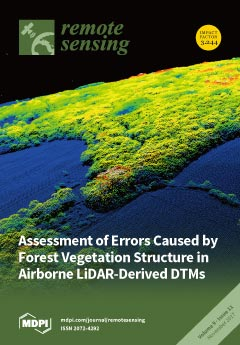1
Center for Quantitative Imaging in Medicine (CQUIM), Department of Medical Research, Taichung Veterans General Hospital, Taichung 40705, Taiwan
2
Department of Biomedical Engineering, Hungkuang University, Taichung 43302, Taiwan
3
Department of Radiology, Taichung Veterans General Hospital, Taichung 40705, Taiwan
4
College of Medicine, China Medical University, Taichung 40402, Taiwan
5
Remote Sensing Signal and Image Processing Laboratory, Department of Computer Science and Electrical Engineering, University of Maryland, Baltimore County, Baltimore, MD 21250, USA
6
School of Physics and Optoelectronic Engineering, Xidian University, Xi’an 710126, China
7
Center for Hyperspectral Imaging in Remote Sensing (CHIRS), Information and Technology College, Dalian Maritime University, Dalian 116026, China
8
State Key Laboratory of Integrated Services Networks, Xi’an 710071, China
9
Department of Computer Science and Information Engineering, National Yunlin University of Science and Technology, Yunlin 64002, Taiwan
10
Department of Computer Science and Information Management, Providence University, Taichung 43301, Taiwan
Abstract
White matter hyperintensities (WMHs) are closely related to various geriatric disorders including cerebrovascular diseases, cardiovascular diseases, dementia, and psychiatric disorders of elderly people, and can be generally detected on T2 weighted (T2W) or fluid attenuation inversion recovery (FLAIR) brain magnetic resonance (MR) images.
[...] Read more.
White matter hyperintensities (WMHs) are closely related to various geriatric disorders including cerebrovascular diseases, cardiovascular diseases, dementia, and psychiatric disorders of elderly people, and can be generally detected on T2 weighted (T2W) or fluid attenuation inversion recovery (FLAIR) brain magnetic resonance (MR) images. This paper develops a new approach to detect WMH in MR brain images from a hyperspectral imaging perspective. To take advantage of hyperspectral imaging, a nonlinear band expansion (NBE) process is proposed to expand MR images to a hyperspectral image. It then redesigns the well-known hyperspectral subpixel target detection, called constrained energy minimization (CEM), as an iterative version of CEM (ICEM) for WMH detection. Its idea is to implement CEM iteratively by feeding back Gaussian filtered CEM-detection maps to capture spatial information. To show effectiveness of NBE-ICEM in WMH detection, the lesion segmentation tool (LST), which is an open source toolbox for statistical parametric mapping (SPM), is used for comparative study. For quantitative analysis, the synthetic images in BrainWeb provided by McGill University are used for experiments where our proposed NBE-ICEM performs better than LST in all cases, especially for noisy MR images. As for real images collected by Taichung Veterans General Hospital, the NBE-ICEM also shows its advantages over and superiority to LST.
Full article





